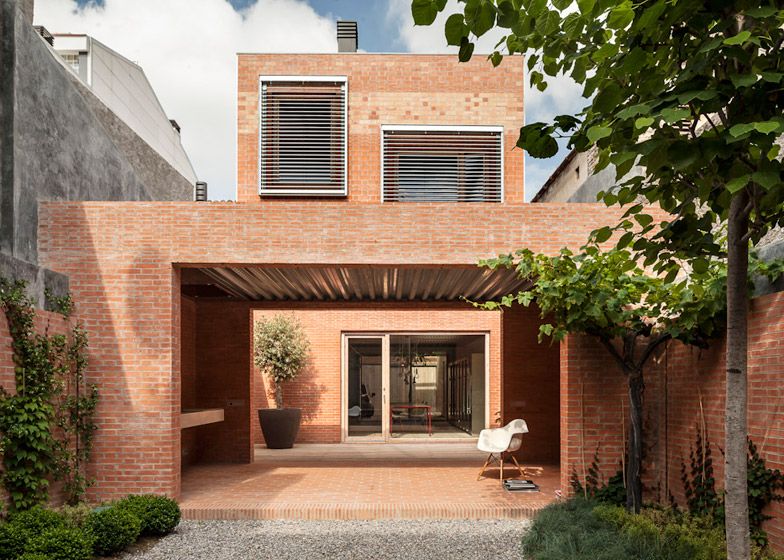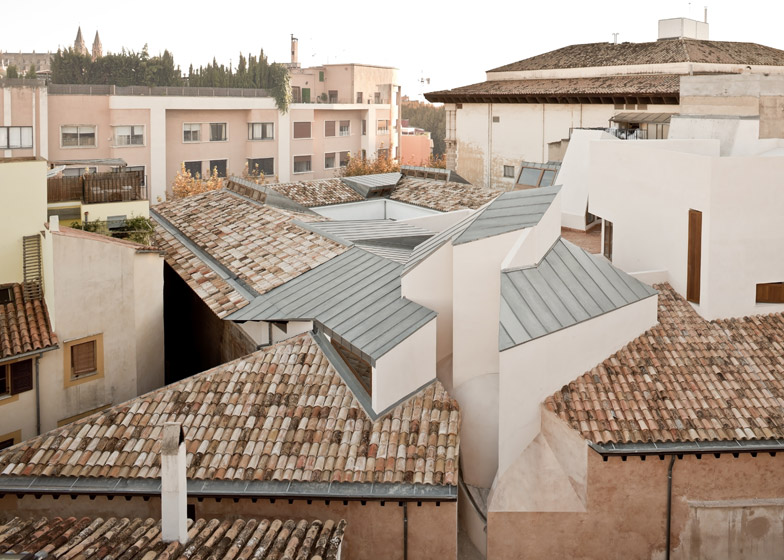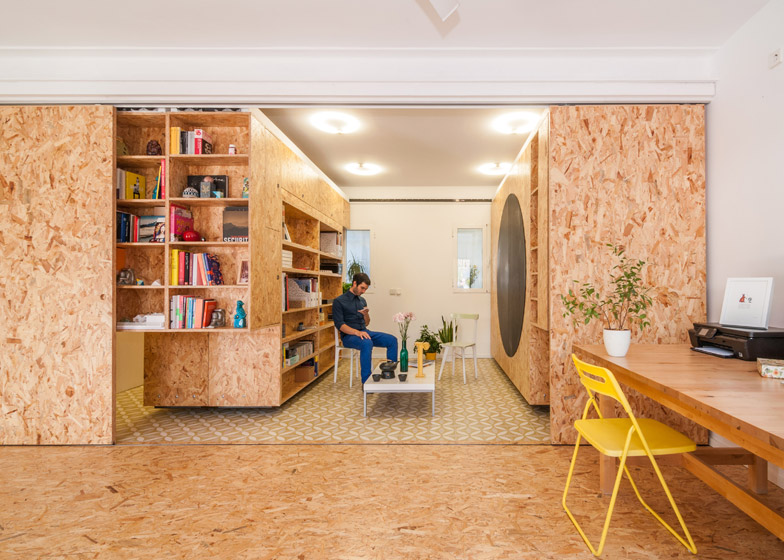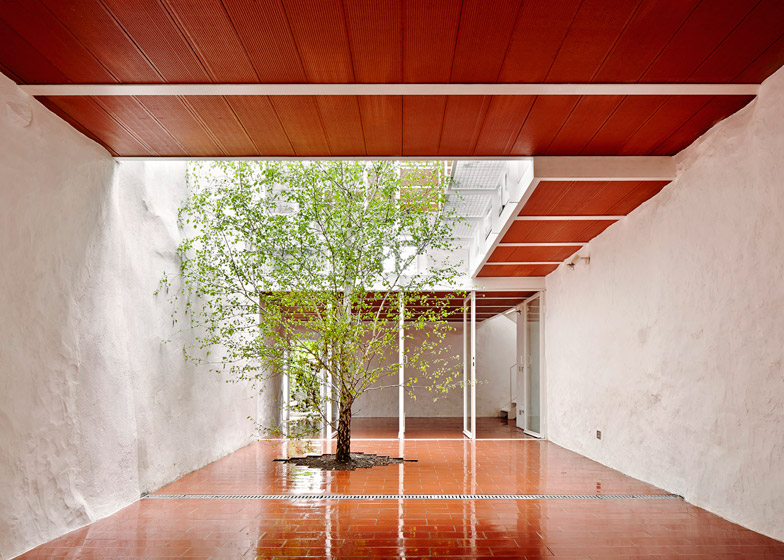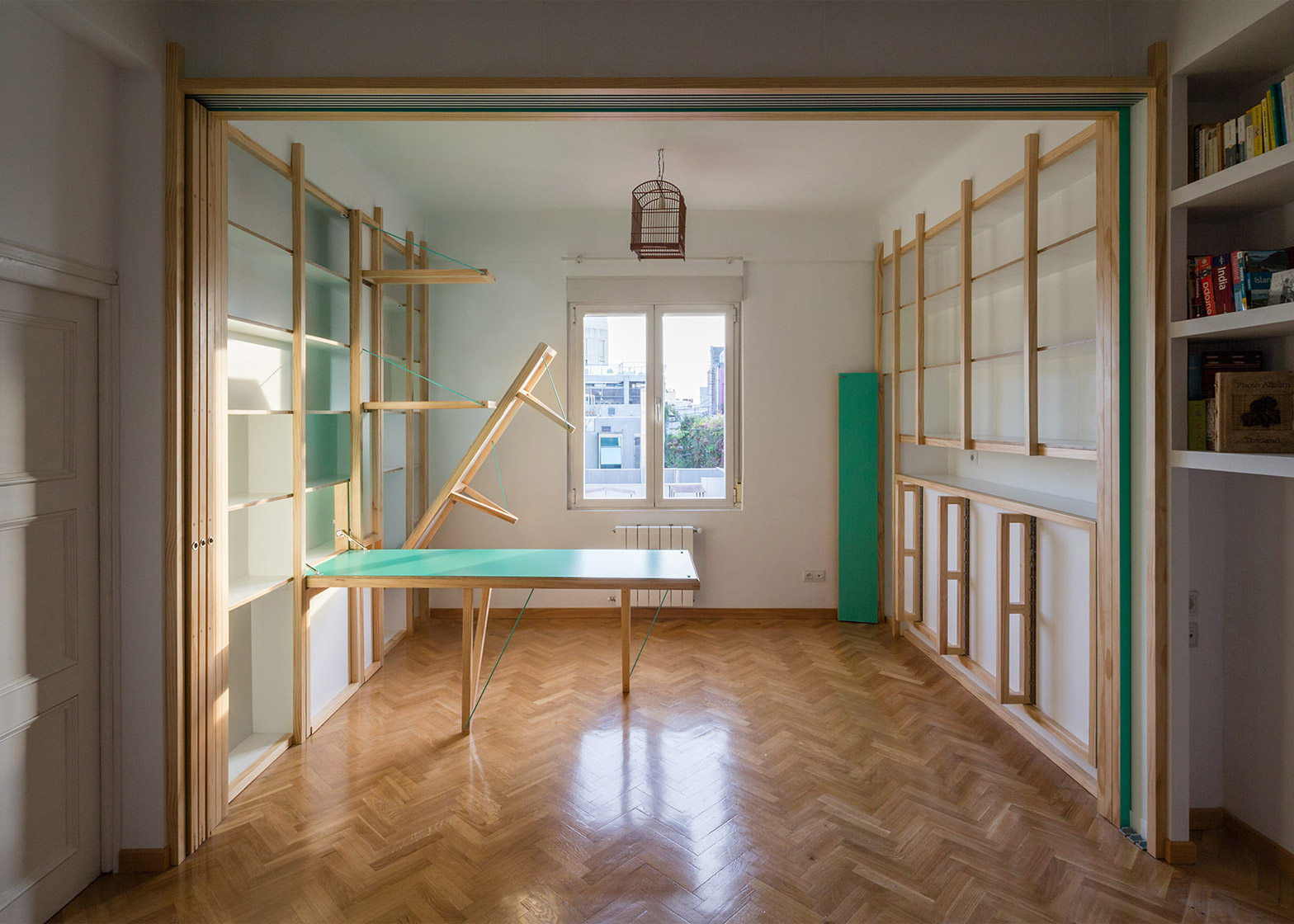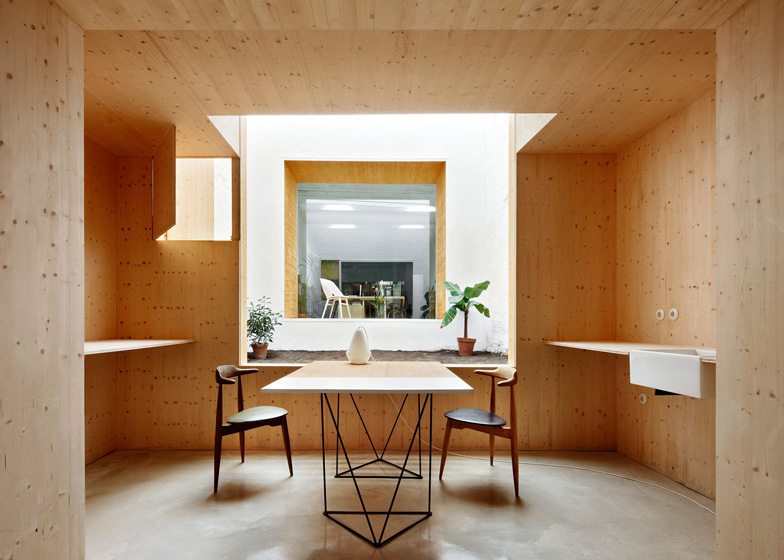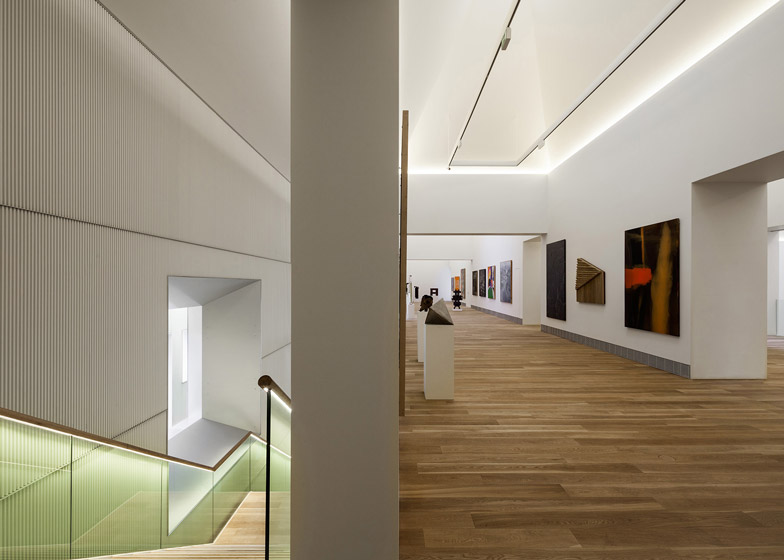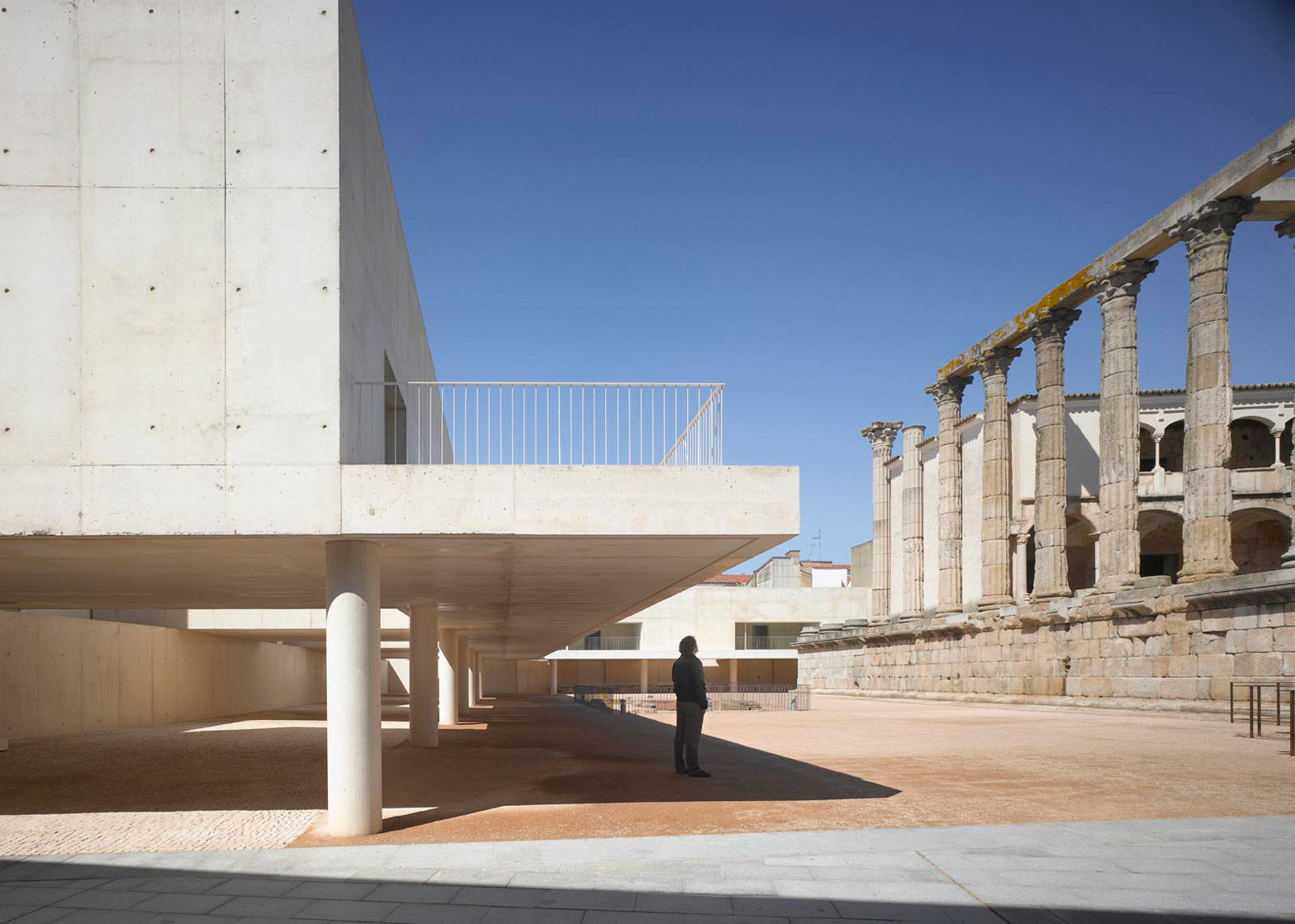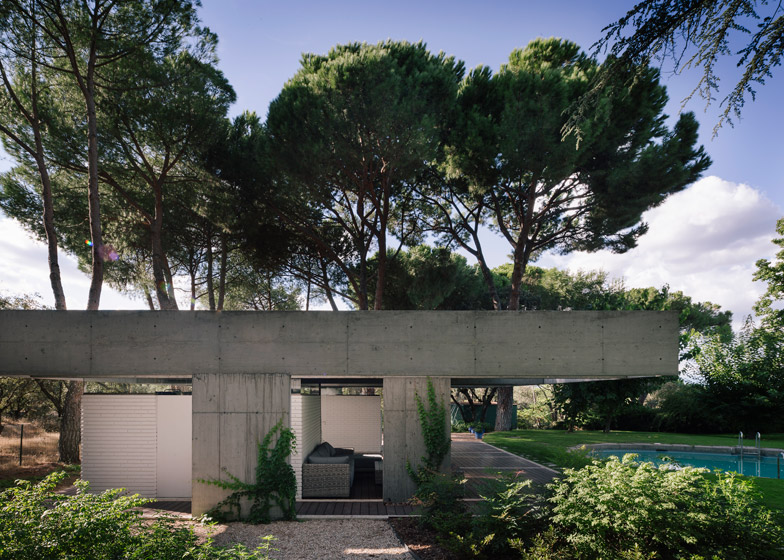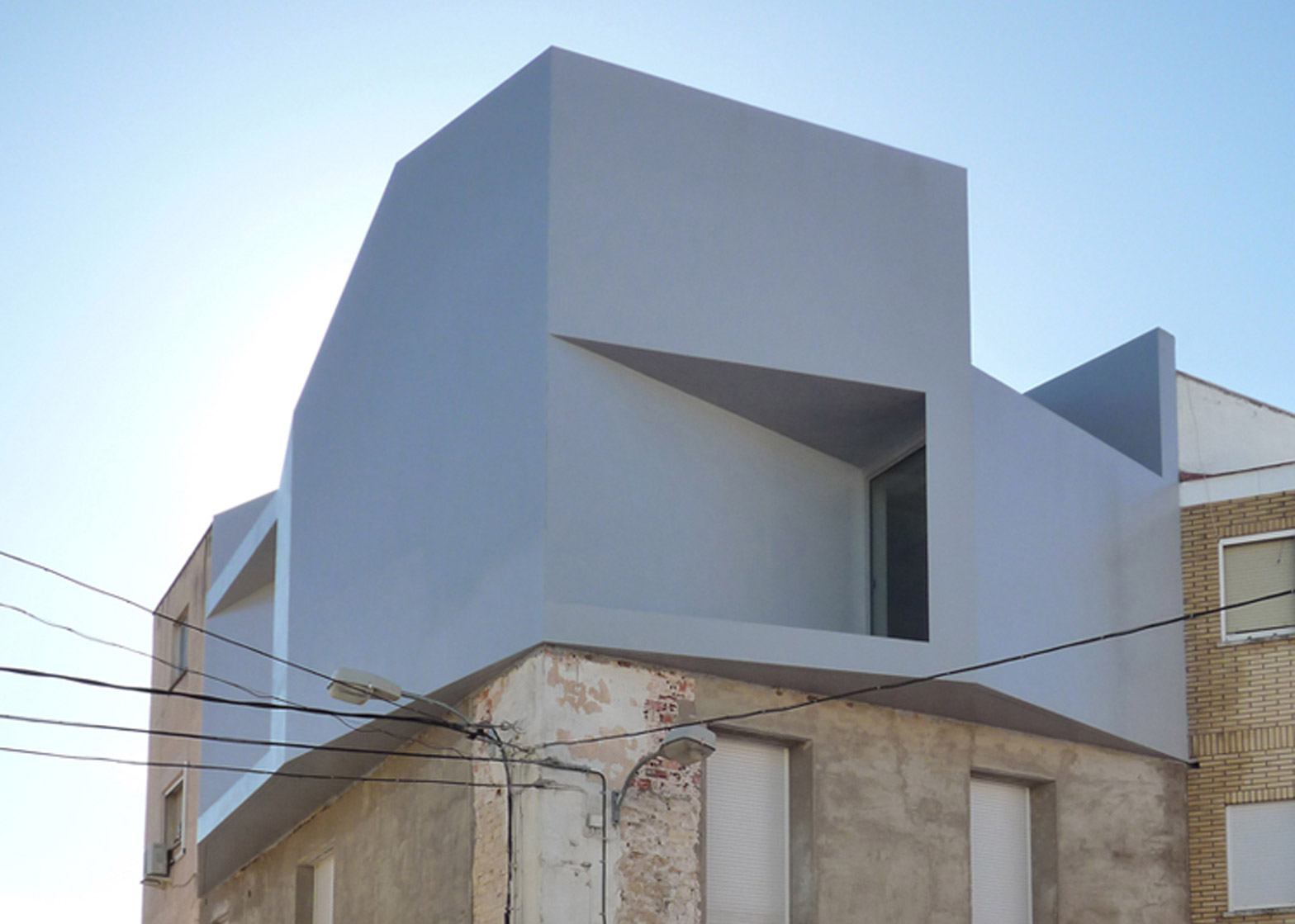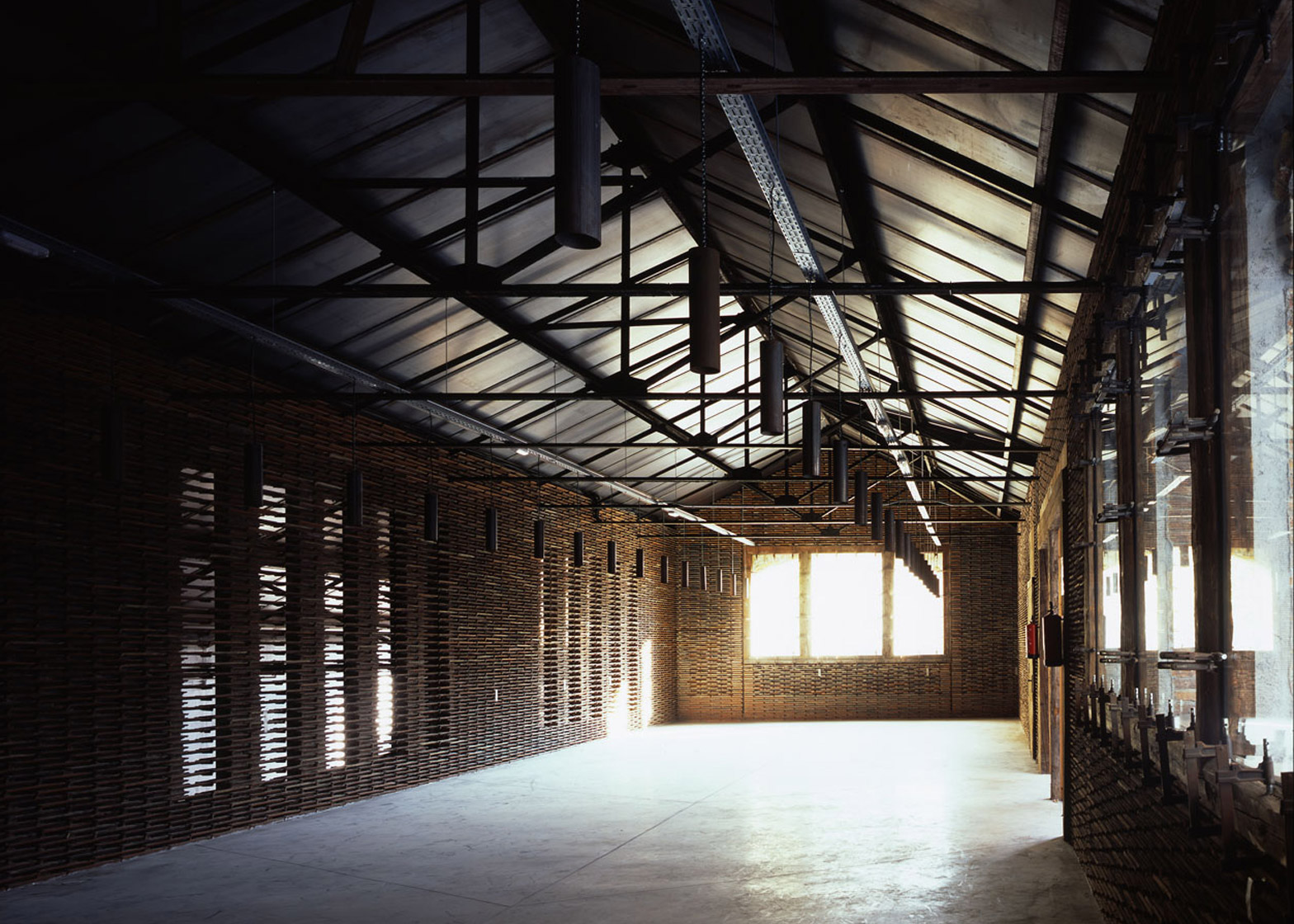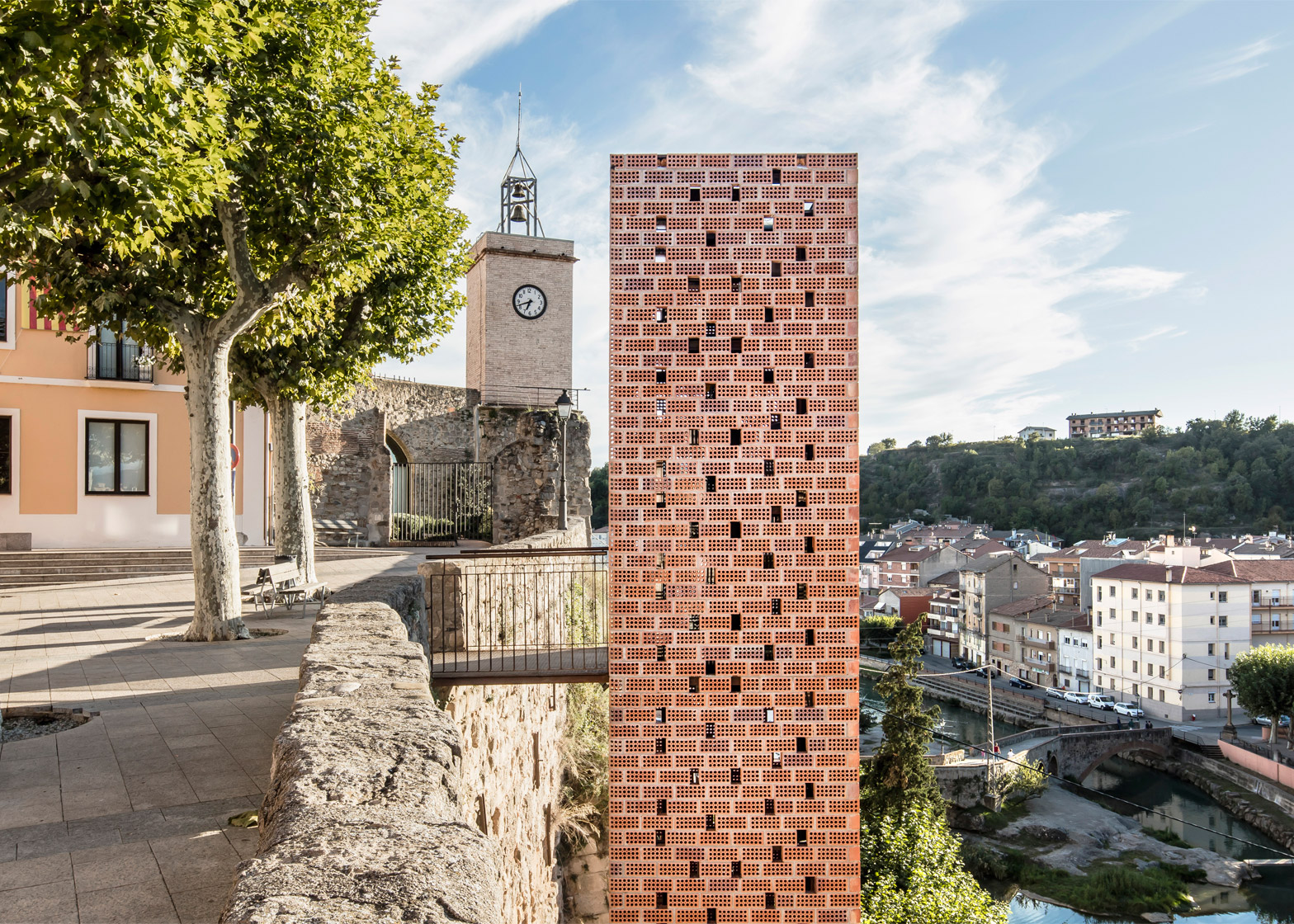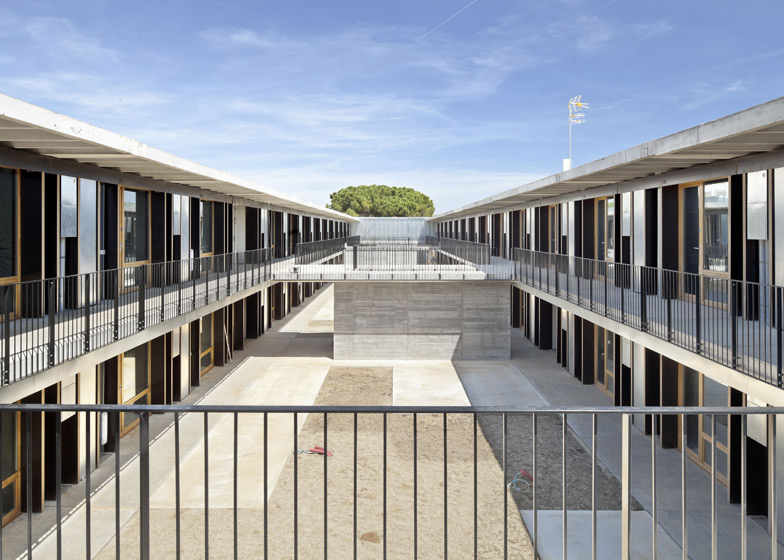Venice Architecture Biennale 2016: the Golden Lion-winning Spanish Pavilion at the Venice Biennale highlights 55 projects described by the curators as offering a more radical response to building in Spain after the economic crisis. Dezeen presents 14 of these projects, ranging from a converted palace to an adaptable apartment (+ slideshow).
Slotted between two existing houses in Catalonia, this house features a series of courtyard spaces on a narrow strip of land, hidden behind a brick wall that joins two crumbling facades. Find out more about House 1014 »
Centro Cultural Casal Balaguer by Flores & Prats and Duch-Pizá
Barcelona studio Flores & Prats and Palma-based Duch-Pizá turned a private Baroque palace in Palma de Mallorca into a cultural centre for the city, with concrete and wood structural additions inside, and sloping zinc roof infills. Find out more about the Casal Balaguer Cultural Centre »
Chipboard units hang from tracks to allow them to slide across this apartment in Madrid by PKMN, creating different layouts and functions for the small space. Find out more about All I Own House »
Casa Luz was one of a number of abandoned stone buildings in a rural village that has seen its population plummet, prompting a local heritage trust to try and find new occupiers. Arquitectura-G restored the exterior but completely reconfigured the interior, adding a new central courtyard. Find out more about Casa Luz »
Tables, benches, and an ironing board are among the the pieces of furniture hidden in the walls of this small apartment in Madrid by Elii Architects. Find out more about Susaloon »
Architects Anna Puigjaner and Guillermo Lopez turned this former launderette into a base for themselves and other members of the MAIO team, adding a courtyard to the 40-metre-long building. It doubles as open studio for designers and architects in need of a workplace. Find out more about the studio renovation »
Museuo de Bellas Artes de Asturias (Fine Arts Museum of Asturias) by Francisco Mangado
Navarra-based architect Francisco Mangado added a crystalline glass structure behind the walls of an otherwise demolished building in northern Spain to create a new building for the Museuo de Bellas Artes de Asturias. The new structure sits between the museum's existing buildings – the Baroque Velarde Palace and a 17th-century house. Find out more about the Museuo de Bellas Artes de Asturias »
Entorno del Templo de Diana by Jose Maria Sanchez Garcia
This public square in Mérida, Spain, surrounds a Roman temple to the goddess Diana, with a two-storey concrete viewing platform. The square has an earth floor to echo the conditions of the original historic building. Find out more about the Entorno del Templo de Diana »
Casa OE by Fake Industries Architectural Agonism and Aixopluc
This house in a hazel-tree field on the outskirts of Alforja is divided into two parts, with a ground floor that can be almost entirely opened up using plastic shutters in the summer, and a more contained first floor for the winter months. Find out more about Casa OE »
This simple concrete pavilion behind a swimming pool by FRPO on the outskirts of Madrid functions as a pool house, cooking area and shelter for several different homes. Find out more about Pabellón de San Lucas »
Perched on top of an old house in Cehegin belonging to the client's mother, this apartment by Grupo Aranea was designed to contrast with the original buildings around it and unfolds to a roof terrace. Find out more about Casa Lude »
Matadero Madrid, Nave 8b by Arturo Franco Office for Architecture
The walls inside this former slaughterhouse by Arturo Franco are formed from stacks of reclaimed roof tiles, creating new spaces for events, offices and a stockroom. Find out more about Nave 8b »
New Access to the Historic Centre of Gironella by Carles Enrich
Carles Enrich built this 20-metre-high elevator next to a Catalan cliffside to connect the medieval area of Gironella to newer parts of the city. The old district had been suffering from an exodus in residents, as it had formerly only been accessible via a steep, uneven staircase. Find out more about the New Access to the Historic Centre of Gironella »
57 Housing Units on the ETSAV Campus by DataAE and H Arquitectes
Students at the Vallès School of Architecture in Barcelona may find themselves living in this development of parallel two-storey blocks positioned either side of a central terrace and connected by bridges. The rooms were left bare to encourage students to design their own interiors. Find out more about the 57 Housing Units »

